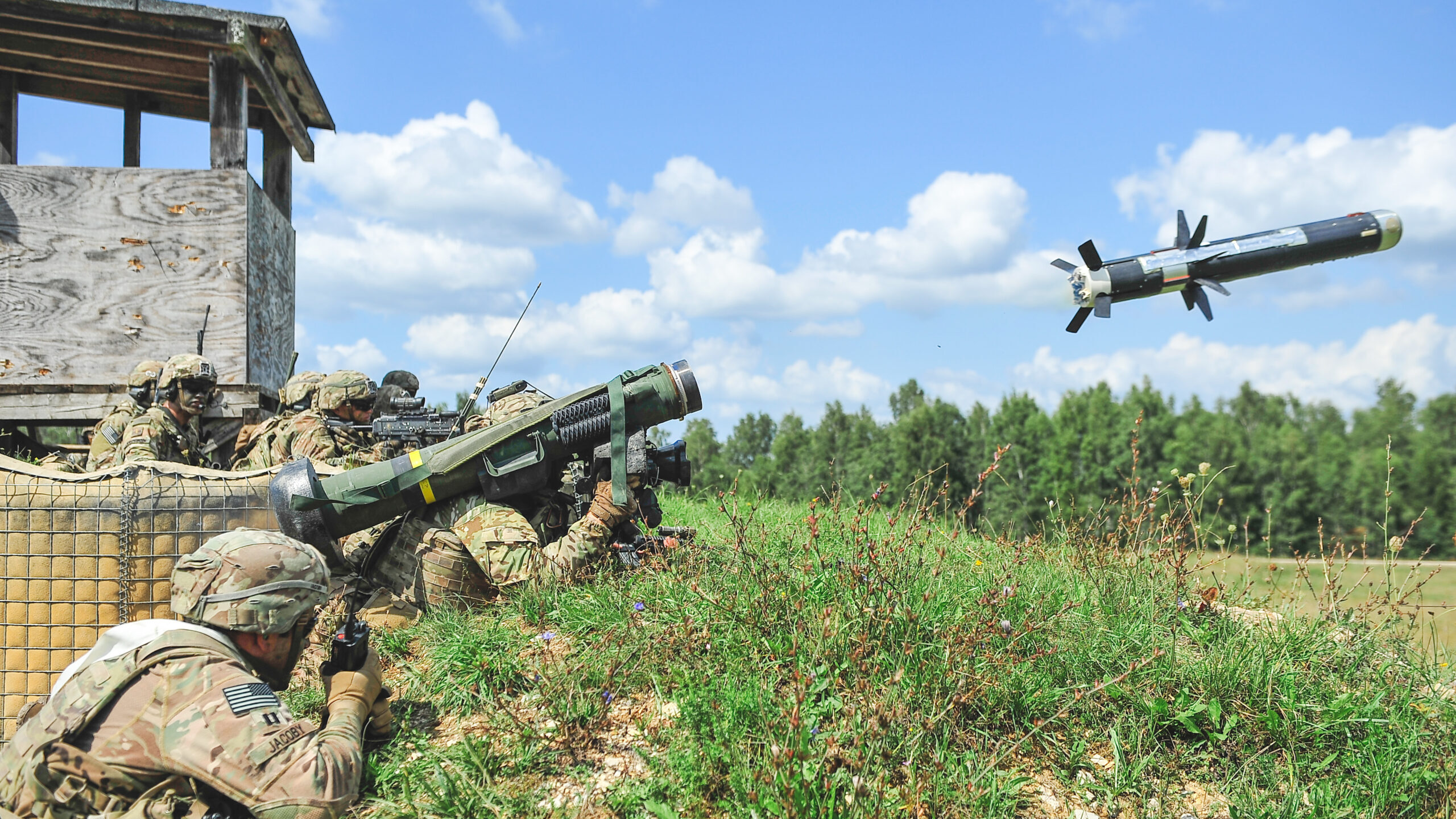
A U.S. Army paratrooper fires an FGM-148 Javelin shoulder-fired anti-tank missile during a combined arms live-fire exercise at Grafenwoehr Training Area, Germany, August 21, 2019. (Sgt. Henry Villarama)
WASHINGTON: The Defense Department has transferred almost $1.5 billion to the Army and Marine Corps to replenish Stinger anti-aircraft weapons and Javelin anti-tank missiles that have been delivered to Ukraine, the Pentagon’s top acquisition executive said today.
“We are actively negotiating right now — the Army is — for Stinger and related components, and that’s ongoing,” Bill LaPlante said during a briefing. “Expect to get that awarded by the end of the May. For Javelins, the award is imminent.”
The department shifted $809 million to the Army for Javelin procurement in fiscal 2022 funds, as well as about $674 million for Stinger procurement for both the Army and Marine Corps, according to a May 1 reprogramming notification signed by Pentagon Comptroller Mike McCord.
The money for both comes from the Ukraine Replacement Transfer Fund, part of the $13.6 billion in supplemental funding for Ukraine appropriated by Congress in March.
As of late April, the Pentagon said it had sent Ukraine over 1,400 Stinger systems and over 5,500 Javelin systems.
Now that the funds have been transferred and Congress has been notified, Army contracting officials can begin digging in with Raytheon and Lockheed Martin to identify exactly how best to ramp up production of those weapons, Deputy Defense Secretary Kathleen Hicks said at the Reagan Institute earlier today.
The department is “trying to understand what is the smartest allocation of funds to get the best output,” she said, and it’s not clear how many Stinger or Javelin systems will be purchased with the $1.5 billion.
For both weapons, increasing production is not as easy as flipping a switch.
The Raytheon-made Stinger has been out of production for the US military for 18 years and is currently only being produced for a single international customer, which the company declined to identify. Because the system’s design is so old, some of its components are obsolete and nearly impossible to source. Last month, Raytheon CEO Greg Hayes said that the company would likely need to redesign some electronics in Stinger’s seeker and missile head.
While the Javelin is currently in production by a Lockheed-Raytheon joint venture, the difficulty there lies in scaling up existing production facilities so that the company can produce “about one and a half times where they are now in monthly production,” Hicks said.
On Tuesday, Hicks accompanied President Joe Biden to Lockheed’s Javelin production facility in Troy, Ala.
“We were there to thank the women and men who work at that facility — for their tireless efforts in supplying the Department of Defense and our allies and partners,” she said, adding that Javelins had been a “game changer” in Ukraine.
Before Biden’s visit, Lockheed CEO Jim Taiclet said he hoped to champion the need to increase Javelin production to replenish US and allied stockpiles, as well as respond to emerging request from new customers.
Lockheed has already used internal funding to begin expanding its production facilities and buying equipment, as well as making advanced payments to suppliers of critical components.
For example, “there’s about 250 microprocessors in every Javelin,” Taiclet said on April 29. “We have to help our suppliers getting ready to bulk up their capacity to and so we may pre-fund them to help them do that.”






















